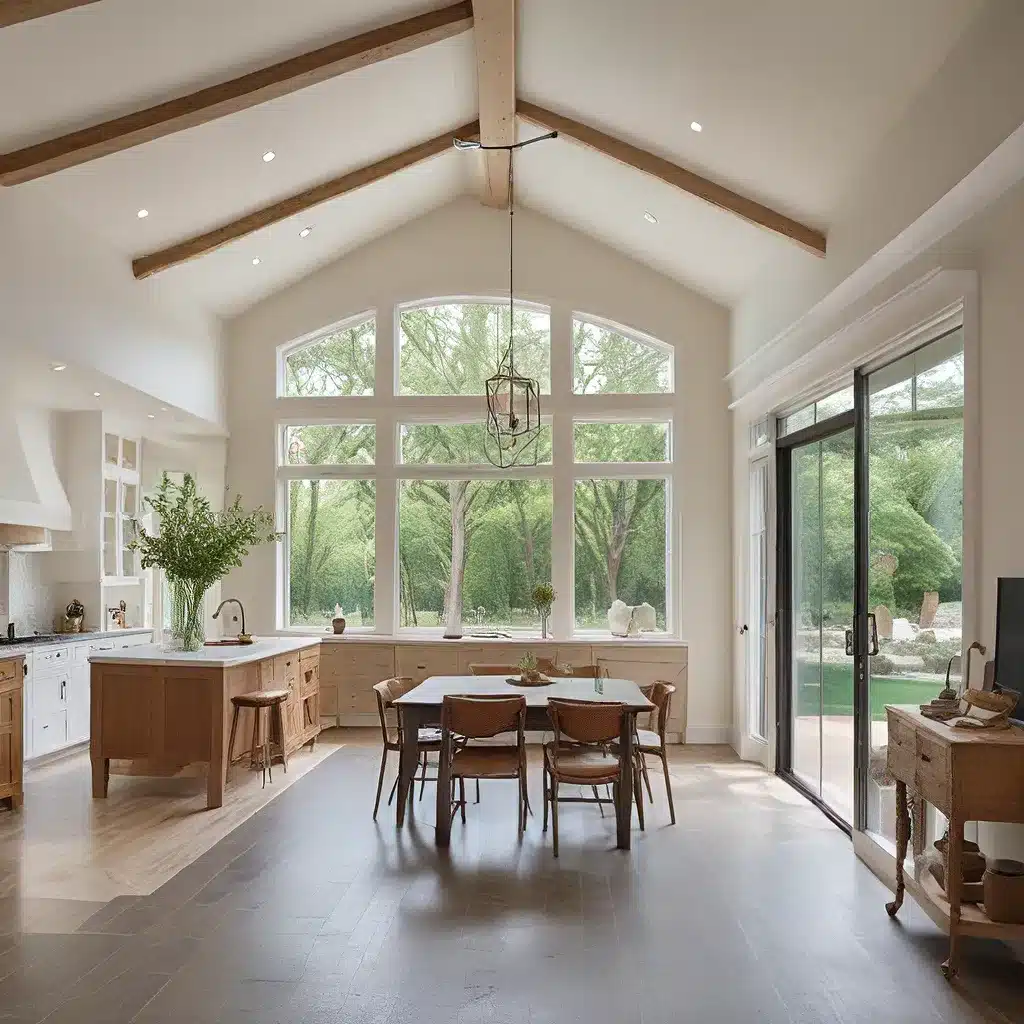
As a passionate home enthusiast, I’ve always been fascinated by the art of blending old and new in home design. It’s a delicate balance, like a perfectly brewed cup of tea – too much of one element can throw the whole thing off. But when done right, the result is a harmonious masterpiece that elevates the entire living experience.
Recently, I’ve been diving deep into the world of home extensions, exploring the strategies and considerations that go into creating a seamless blend of the old and the new. And let me tell you, it’s a captivating journey that’s equal parts challenging and rewarding.
Preserving the Past, Embracing the Future
When it comes to home extensions, one of the most crucial factors is respecting the original character of the building. Whether you’re working on a historic home or a modern office, understanding the existing context is the first step towards a successful blend of aesthetics.
Think about it like this – you wouldn’t want to slap a shiny, chrome-plated extension onto a quaint, Victorian-era cottage, would you? That would be like wearing a neon tracksuit to a black-tie event. It just doesn’t work.
Instead, the key is to find ways to harmonize the new addition with the existing structure. This could involve selecting materials that complement the original, maintaining a consistent color palette, or integrating design elements that echo the architectural style of the existing building.
The Materials Masterclass
One of the most effective ways to achieve a seamless blend is through the strategic selection of materials. It’s not always possible to match the exact materials used in the original structure, but that’s where the real artistry comes into play.
Imagine you’re working on a historic home with exposed brickwork. Instead of simply slapping on some generic siding, you could opt for a brick veneer or similar-looking materials that mimic the original. This creates a visual continuity that ties the old and new together, like a well-tailored suit.
But it’s not just about the materials themselves – the color palette is equally important. You want to ensure that the colors used in the extension harmonize with those of the existing building. This doesn’t mean you have to use the same exact shades, but they should be in the same tonal range or share complementary hues.
Architectural Harmonies
Aesthetic harmony isn’t just about materials and colors – it’s also about the design itself. When adding an extension, it’s crucial to ensure that the architectural style complements the original building. This can involve matching rooflines, window placements, and overall proportions.
Integrating design elements from the original structure into the extension can also create a sense of unity. Think about the placement and style of windows and doors, for instance. Matching these focal points can make the extension look like a natural extension of the original building, rather than a jarring afterthought.
And let’s not forget about the roof – it plays a pivotal role in achieving a cohesive look. While it’s not always necessary to match the exact roofing material, ensuring that the roof design complements the original is essential. This could involve matching the slope, pitch, or architectural details of the existing roof.
Outdoor Oases and Landscaping Liaisons
When it comes to blending old and new, it’s not just about the building itself – the outdoor spaces play a crucial role as well. Landscaping should flow seamlessly from the existing property to the new extension, creating a sense of continuity and enhancing the overall aesthetics.
Think about features like walkways, patios, and gardens that tie the two spaces together. Carefully curated landscaping can create a seamless transition, making the extension feel like it’s always been there, rather than an afterthought.
And let’s not forget about the importance of minimalism in this context. Sometimes, less is more when it comes to blending aesthetics in building extensions. Embracing a clean, modern design approach can help create a sleek, harmonious addition that complements the original structure without overpowering it.
The Architect’s Artistry
Of course, no discussion of harmonious home extensions would be complete without acknowledging the crucial role of the architect. These design maestros bring a wealth of knowledge and creativity to the table, guiding you through the process and ensuring that every detail is carefully considered.
A skilled architect with experience in building extensions and renovations can be the difference between a seamless blend and a jarring mismatch. They can help you navigate the intricacies of material selection, color palettes, and architectural styles, ensuring that the end result is a true work of art.
Embracing the Challenges, Celebrating the Rewards
Blending aesthetics in building extensions is no easy feat – it requires a delicate balance, an eye for detail, and a deep understanding of the existing context. But when you get it right, the rewards are truly immeasurable.
Not only does a harmonious extension expand your living space, but it also enhances the overall aesthetic and financial value of your property. Imagine coming home to a space that seamlessly blends the charm of the past with the freshness of the modern – it’s a living, breathing testament to your vision and the artistry of your design team.
So, if you’re embarking on a home extension project, embrace the challenge and let your creativity shine. With the right approach and the expertise of a skilled architect, you can create a space that not only meets your practical needs but also delights the senses and leaves a lasting impression on all who enter.
After all, a home is more than just a collection of walls and floors – it’s a reflection of your personal style, your values, and your connection to the world around you. And when you get the balance of old and new just right, it becomes a true work of art.
So, what are you waiting for? Let’s dive into the world of harmonious home extensions and create something truly spectacular!
















